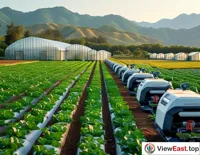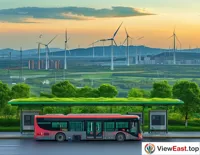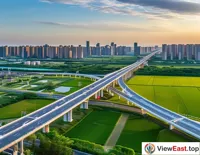







On the ancient yet vibrant land of China, the wheel of urbanization is rolling forward, ushering in a new chapter of urban-rural integration. This is not only a spatial reorganization but also a profound social transformation, reshaping the urban and rural landscape of China at an unprecedented speed and scale, and promoting the comprehensive development of the social economy.
The Call of History: The Beginning of Urban-Rural Integration
The story begins with China's reform and opening up, when the process of urbanization accelerated, and cities became magnets attracting rural labor. However, over time, the urban-rural gap widened, and the issue of urban-rural division became increasingly prominent. Faced with this challenge, China proposed the development strategy of urban-rural integration, aiming to break the urban-rural dual structure and achieve integrated urban and rural development.
The Blueprint of Planning: The Layout of Urban-Rural Integration
With the proposal of the urban-rural integration strategy, China began to draw a new blueprint for urban and rural development. Urban planners included rural development in the overall urban development plan, promoting the extension of infrastructure to rural areas, the coverage of public services to rural areas, and the optimization of industrial layout to rural areas. The implementation of these plans laid a solid foundation for urban-rural integration.
The Wings of Technology: The Accelerator of Urban-Rural Integration
Technological innovation provides strong support for urban-rural integration. The application of information technology such as the internet, big data, and cloud computing has shortened the information gap between urban and rural areas. The application of modern agricultural technology has improved agricultural production efficiency and increased farmers' income. The development of intelligent transportation systems has closed the distance between urban and rural areas. These technologies have provided wings for the takeoff of urban-rural integration.
The Green Hope: The Ecological Chapter of Urban-Rural Integration
Urban-rural integration is not only an economic integration but also an ecological one. While promoting urbanization, China focuses on protecting the ecological environment and promoting green development. The development of urban greening, ecological agriculture, and clean energy projects has not only improved the urban environment but also brought new economic growth points to rural areas. The ecological chapter of urban-rural integration is writing a new story of harmonious coexistence between humans and nature.
The Bridge of Culture: The Spiritual Bond of Urban-Rural Integration
Urban-rural integration is also a cultural integration. In the process of promoting urban-rural integration, China focuses on protecting and inheriting traditional culture and promoting cultural exchanges. Rural cultural heritage has been protected, and rural handicrafts and folk activities have become an important part of urban culture. The bridge of culture has made the spiritual bond between urban and rural areas more tightly knit.
Future Outlook: The Bright Prospects of Urban-Rural Integration
Looking to the future, China's urban-rural integration will continue to deepen. With the continuous improvement of policies and the advancement of technology, the gap between urban and rural areas will be further narrowed, and the connection between urban and rural areas will be closer. Urban-rural integration will open a new chapter for China's urbanization and provide strong momentum for the comprehensive construction of a modern socialist country.